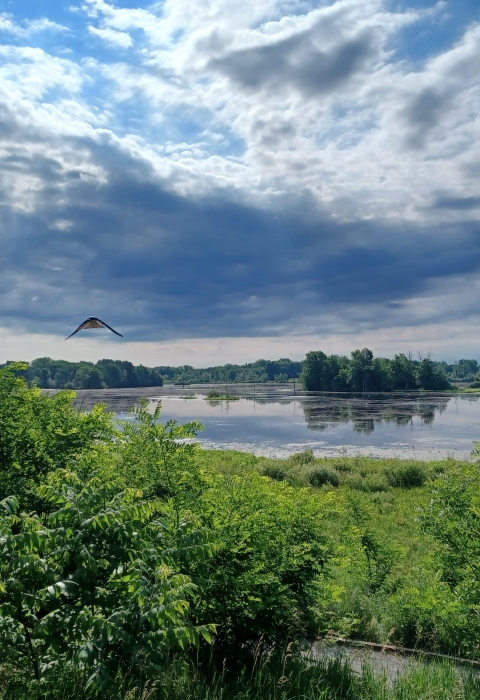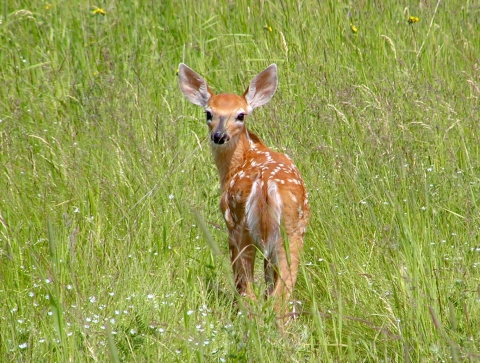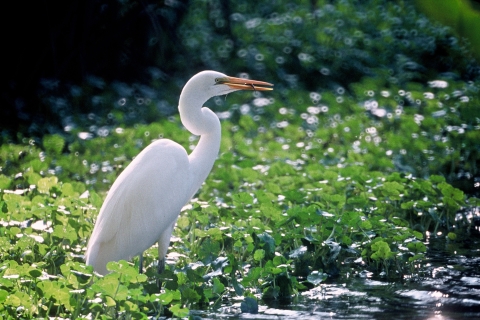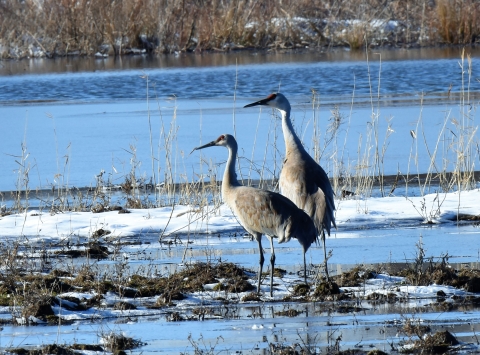Seasons of Wildlife
Spring
Spring waterfowl migration may peak from the last two weeks in March to the first two weeks in April. Geese typically leave the marshes at sunrise to feed in fields within a 15 mile radius and then return to roost at sunset. The best times see large numbers of geese is during dawn or dusk as they are leaving or returning to the marshes. Goslings make their first appearance in May.
Shorebirds and warblers generally peak in May. There is a shorebird observation area on Feeder Road just north of Route 77, which when flooded often holds shorebirds in the spring. If any marshes or impoundments are drawn down in the late summer or fall, shorebirds can often be found using the mud flats from August to October fattening up on their southward migration. During both spring and fall migrations, Swallow Hollow and Kanyoo Trails are some of the better areas to observe migrant warblers and other songbirds due to the variety of habitats present. Mammals such as red and gray fox may occasionally be seen hunting in fields.
Summer
The summer months on the refuge are often quieter than spring and fall, although several water birds do stay and breed on the refuge, including rails, moorhens, and coots. The state endangered black tern and American and least bitterns can also be found breeding in the marshes. A large rookery of great blue herons is located along Route 63 just south of Oak Orchard Ridge Road. Many songbirds also breed on the refuge such as cerulean warbler, northern waterthrush, and yellow-throated vireo all of which can be found along Swallow Hollow Trail. Grassland birds such as meadowlarks, bobolinks, and savannah sparrows breed in the fields and are sometimes seen along Casey Road, Oak Orchard Ridge Road and Sour Springs Road (near Roberts Road).
Fall
Fall migration is much more extended than spring and typically peaks in October. Due to vegetation growth during the summer months, migratory waterfowl are less visible from the overlooks during the fall, although numbers do occur, with Mallard Overlook offering the best viewing. In recent years, great egrets have used the marshes around the refuge as a staging area during the fall months with large numbers often seen during this time.
Winter
Red-tailed hawk, white-breasted nuthatch, northern cardinal, American tree sparrow, and American goldfinch are the most common winter birds. Uncommon species include American kestrel, morning dove, pileated woodpecker, dark-eyed junco and house finch.
During the winter months, overlooks and parking areas are not plowed on weekends. Trails are not cleared of snow.
Featured Species
The unique array of habitats throughout the refuge host a diversity of wildlife. Over 266 different species of birds, an estimated 29 species of reptiles and amphibians, 18 species of fish, 42 species of mammals, and an abundance of invertebrates have been documented on the refuge. Many visitors come for a chance to see migratory neo-tropical birds, large flocks of waterfowl, or to catch a glimpse at the resident eagle nests and heron rookeries.
Check out our refuge e-bird list for information on seasonal occurrence and abundances of bird species the refuge.



